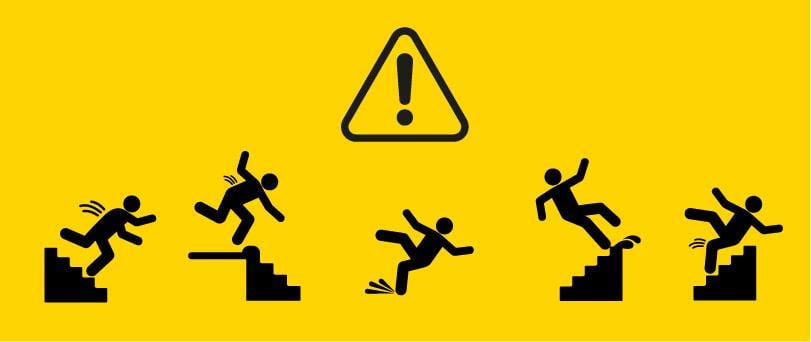Taking Care of the Elderly: 6 Smart Tips for Stair Safety
Stairs are a common home hazard, causing over one million injuries each year. Though everyone is susceptible to injuries due to stairs, the elderly are more prone to this type of accident.
Below are 6 smart tips to promote safety stair safety in the home, especially for elderly residents.
1. Visibility. Staircases should always be well lit. Creating visibility for a staircase is best done with recessed lighting where the light is focused on the actual steps. Proper lighting can also be used as a guide to create a directional path. In doing this, it is important not to just highlight the steps of the staircase but also the areas located below and above the staircase.
2. Flat Surfaces. Thick carpets and rugs on stairs or directly above or below can become tripping hazards. If you do have a rug or carpet nearby make sure that it is lies flat and that it has no chance of moving. All flat surfaces, including stairs, can lead to injury if they are slippery. Make sure to wear proper footwear with grip and traction when walking down stairs.
3. Railings. All staircases, no matter how many steps they have, should have railings. This will give a place to hold when going up and down the stairs, insuring support and stability. Adding railings doesn’t have to be expensive, especially when you look for solutions specifically designed for the elderly.
4. Cleanliness. Any form of clutter can cause a person to injure themselves when going down the stairs. These items can become hazardous if stepped on, slipped on or may even cause an injury simply when someone tries to avoid the obstacle.
5. Active Lifestyle. The more active an elderly person is the more they can handle the mobility and strength that is needed when going up and down stairs. Finding healthy ways to add regular activity to your daily life, like walking or yoga, is one of the best things you can do to prevent injury. And, if injury does occur, it’s much easier to recover quickly when you are active and healthy.
6. Wheelchair Accessible. It is safe to say that wheelchairs weren’t meant for going up and down stairs. That is one of the reasons elevators are useful. But many people don’t have the time, space and especially the money when it comes to having an elevator in their home. A motorized stair chair solves this problem, allowing for mobility in two-story homes.
The latest chair lifts on the market are head and shoulders above older models you may be familiar with. One of the greatest benefits of new chair lifts is that you can find ones that don’t need to be installed. No tracks and no permanent hardware mean it’s easy to accommodate wheelchairs in any home, even those that are being rented!
Purchasing a motorized stair chair, along with the other tips, are great ways to help the elderly live comfortably at home for as long as possible.


